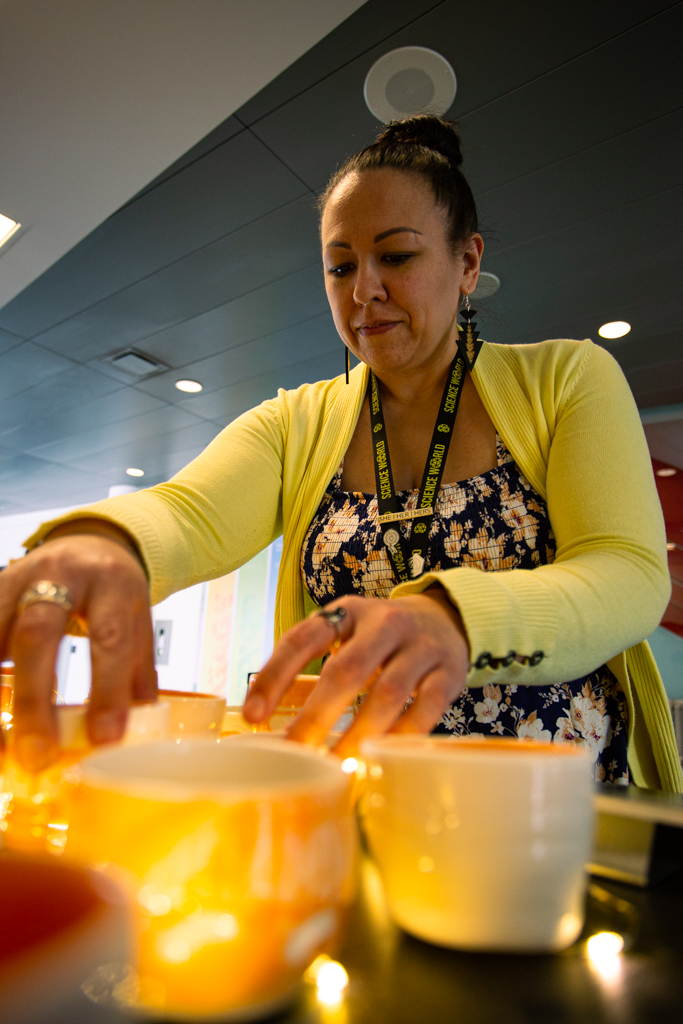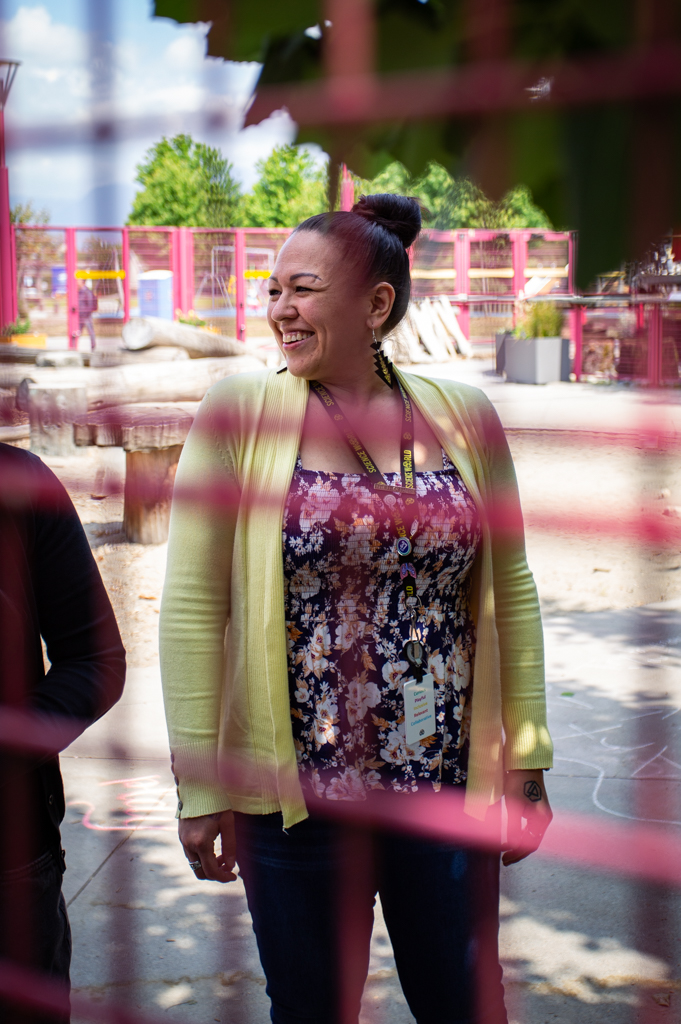Sometimes those who came before you impact your life in nebulous ways. And sometimes, you can look at history and pinpoint the exact moment someone’s work changed the future course of your life.

For Ēlya White, a content developer at Science World with a degree in Indigenous Studies and Art History, Chief Rose Charlie represents the latter.
“I wouldn’t be able to do the things I do without Chief Rose Charlie,” says Ēlya, who is half Indigenous (Haida/Tsimshian) and half European (Welsh/Norwegian/Polish).
“My dad lost his status and was removed from his residential school when my grandmother remarried a non-Indigenous man,” says Ēlya.
Before 1985, under the Indian Act, an Indigenous woman who married a non-Indigenous man would lose her status. And so would her children.
By fighting for Bill C-31, which corrected some of the gender discrimination in the Act, Chief Rose Charlie helped restore status to more than 16,000 women and 46,000 children.
“Because of Chief Rose Charlie’s advocacy, my grandmother was able to get my father’s status back, as well as her own,” Ēlya says.
Wonder Women
The topic of world-changers is on the minds of folks at Science World as they gear up to celebrate more than 90 women in Trailblazing—Women in Canada since 1867, presented by Acuitas Therapeutics.
At Science World from June 13, 2023 to January 22, 2024, the exhibition tells the stories of the impact women have had across many spheres—from science to sports, art to academia, politics to domestic life. And the impact those spheres have had on women.
“It talks about how women's experiences differ based on race, ethnicity, class, and whether they're rural or urban,” says Ēlya, who is part of the team bringing Trailblazing to Science World. “It offers a range of perspectives on women’s movements and how they have not been linear throughout history—there have been many ups and downs.”

With engaging elements like a hockey table, multimedia presentations and interactive light tables, the exhibition is shaped around five themes: Work, Education, Body, Politics, and Violence Against Women.
“It talks about the barriers women faced with respect to who could be educated and who could teach,” says Ēlya. “Many of the women featured weren’t allowed to be hired for certain roles, so they volunteered for them and made significant sacrifices even though they didn’t know for certain they were going to change the landscape for women down the road.”
While the exhibition acknowledges how far women still have to go to reach true equality in the workplace, it features stories of women whose résumés are full of adventure, like those who have reached the highest heights literally (astronauts) and figuratively (the top women hockey players in the world).
It also celebrates women who have fought—and continue to fight—for the greater good.
“It tells the stories of women in politics, like those who first championed for environmentalism and against climate change,” Ēlya says.
The exhibition celebrates a cross-section of women, from Indigenous matriarchs like Chief Charlie Rose to change-making youth like artist and activist Ta’Kaiya Blaney.
“I think this exhibition is going to inspire people in general—but especially women and girls—to feel empowered,” Ēlya says.

It will also hopefully inspire visitors to draw parallels with their own lives, as Ēlya herself does.
“My mother has had four brain tumors,” Ēlya says. “And she now sits on medical committees that are changing the way doctors work and interact with patients. She’s the one who taught me how to advocate for myself, how to stand up and speak up for the things that matter to me.
“She’s my own personal trailblazer.”
Lift up Indigenous voices.
From illustrating Indigenous Water Protectors, to harvesting food sovereignty, to fighting climate change, to developing exhibits at Science World, these Indigenous trailblazers are making amazing contributions to the world of STEAM (science, technology, engineering, art & design, and math).
